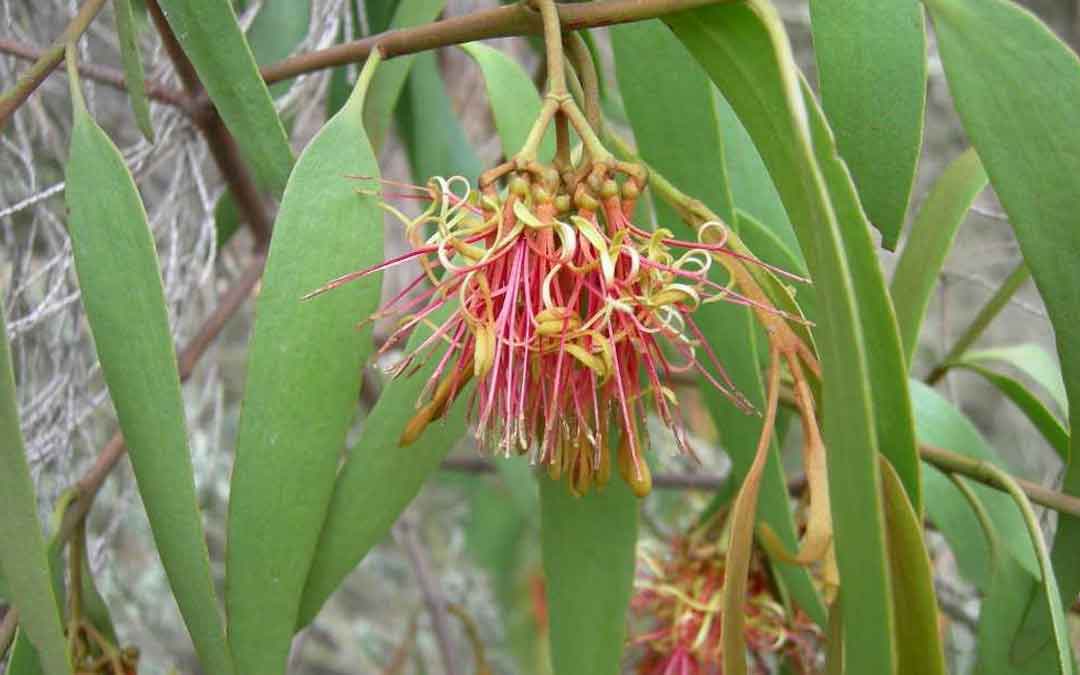Misunderstood mistletoes

Mistletoes are a fascinating group of parasitic plants that have evolved to depend on their host trees for water and nutrients. They play a significant yet often misunderstood role in the natural environment. These plants are not just parasites or Christmas decorations to kiss under: they are crucial components of the ecosystems they inhabit.
European mistletoes (Viscum album) and Australian mistletoes belong to different families and are only distantly related. European mistletoe is a member of the Santalaceae family, while most Australian mistletoes, including the commonly found species in Victoria, belong to the Loranthaceae family.
Despite being from different families, both groups have evolved similar parasitic lifestyles, which is a case of convergent evolution. Although they are not closely related, they have developed similar strategies to survive by attaching to host plants and extracting water and nutrients. However, they are distinct species with different evolutionary histories, geographical distributions, and ecological roles.
Native mistletoes
Victoria is home to several species of mistletoe, with the most common being Amyema miquelii (Box Mistletoe), Amyema pendula (Drooping Mistletoe), and Muellerina eucalyptoides (Creeping Mistletoe). These species primarily attach themselves to eucalypts, wattles, and other native trees. The appearance of mistletoes can vary, but they generally feature leathery leaves and produce small, tubular flowers, often in shades of red, yellow, or green.
The role of mistletoes in ecosystems
Contrary to the common belief that mistletoes are harmful parasites, they actually play an important role in the biodiversity of bushland. While mistletoes do extract water and nutrients from their host plants, they rarely kill them. Instead, they contribute to a more diverse and dynamic ecosystem.
Mistletoes as a food source
Mistletoes are key sources of food for various animals. Their leaves are a preferred food source for certain insects, such as the larvae of the Red Spotted Jezebel butterfly (Delias aganippe). The flowers of mistletoes produce nectar, which attracts pollinators, including birds like honeyeaters. Mistletoe berries are an important food source for birds, particularly the Mistletoebird (Dicaeum hirundinaceum), which plays a crucial role in the plant’s seed dispersal. Mistletoebirds defecate directly onto branches, and the sticky residue surrounding the seeds helps them stick in the canopy and grow from there. It’s mutually beneficial as it means more berries for the Mistletoebirds to eat in future. Possums and gliders also use mistletoes as a food source, especially when other food is scarce.
Mistletoes contribute to ecological health
Mistletoes increase the structural complexity of vegetation, providing habitat and shelter for various species. Birds use the dense foliage of mistletoes for nesting.The presence of mistletoes also creates microhabitats that can support a variety of life forms, from fungi to invertebrates. These microhabitats contribute to the overall biodiversity of the bush, making mistletoes integral to maintaining the health and resilience of these ecosystems. Ecosystems with mistletoes often support higher levels of biodiversity than those without.
Mistletoes are a sign of healthy (not an unhealthy) bushland
The parasitic nature of mistletoes can even benefit the host plant communities by promoting a more balanced and healthy environment. For example, the stress induced by mistletoe infestation can reduce the dominance of particular tree species, allowing other plants to thrive and thus increasing plant diversity. While excessive mistletoe infestation can occasionally harm individual trees – particularly in areas where clearing means there are less trees and large shrubs – their presence is generally a positive indicator of ecological health.
Written by Jen Willis
Photos by Jen Willis and Cathy Willis
